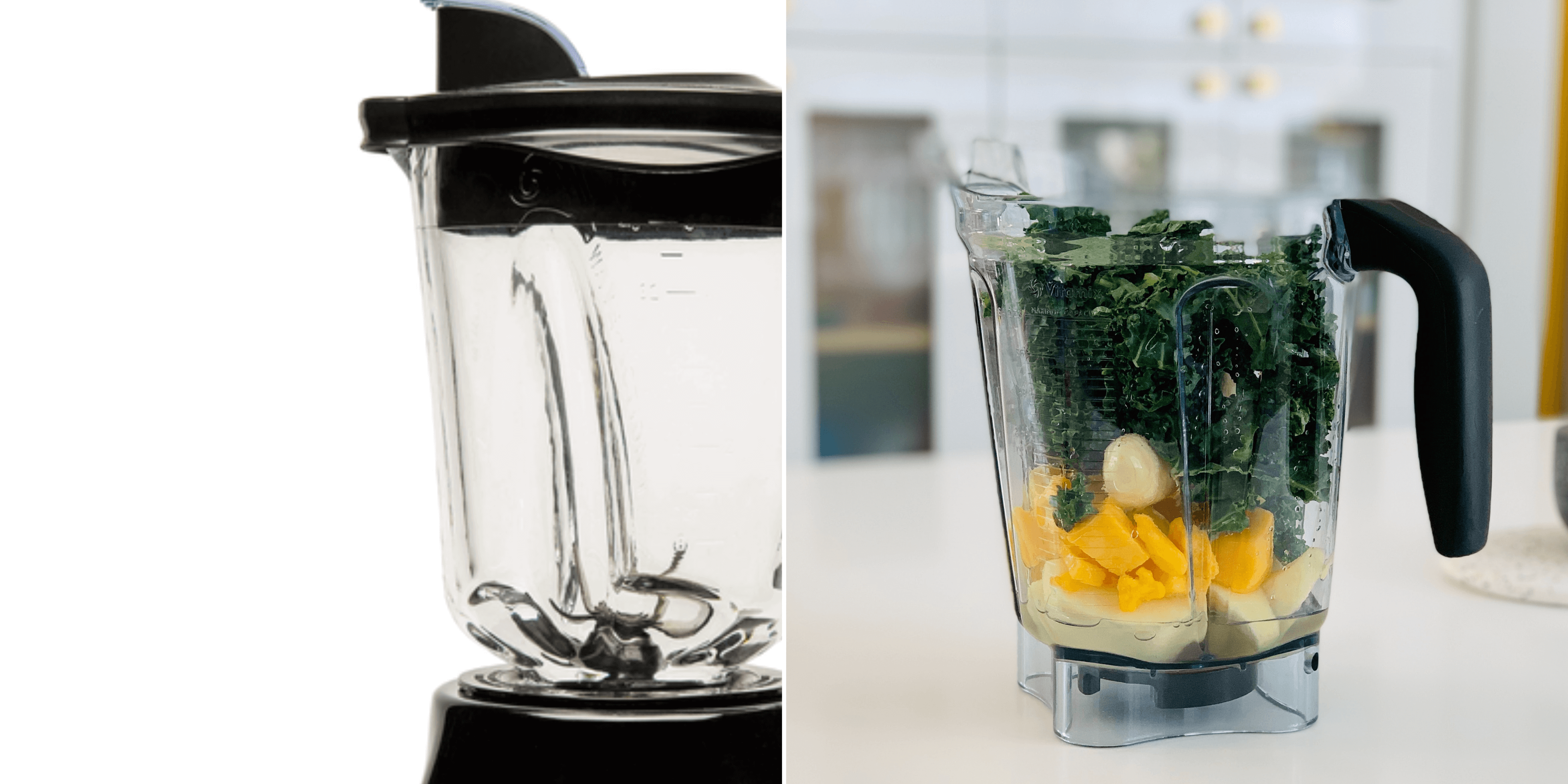When choosing a blender, you'll need to choose whether to go with a glass or plastic jar.
Both materials have their pros and cons, but the best choice for you will depend on your needs and preferences.
In This Article
- Material Comparison
- Durability
- Aesthetics
- Cost
- Environmental Impact
- Conclusion
- Frequently Asked Questions
- Further Reading
Material Comparison
Blenders are made from various materials, but the most common are glass and plastic. Glass blenders are often praised for their aesthetic appeal. They are made from tempered glass, which gives them a sleek and sophisticated look. This type of glass is also resistant to staining, so it can maintain its clear, shiny appearance even after blending colorful fruits and vegetables.
Plastic blenders, on the other hand, are appreciated for their lightweight design. They are typically made from BPA-free plastic, which is considered safe for food contact. The lightweight nature of plastic blenders makes them easy to move around, which can be a significant advantage if you frequently need to move your blender from one place to another.
Durability
When it comes to durability, glass blenders often have the upper hand. They are designed to withstand the high-speed rotation of the blender blades. The tempered glass used in these blenders is not only resistant to scratching but it's also designed to handle extreme temperature changes, which means you can blend hot soup or cold smoothies without worrying about the glass shattering or cracking.
Plastic blenders, while generally quite robust, can become scratched over time. This is particularly true if you frequently use your blender to process hard ingredients like ice or nuts. Additionally, plastic blenders may not handle extreme temperature changes, as well as glass blenders, which could limit their versatility in preparing different types of recipes.
Aesthetics
In terms of aesthetics, many people prefer the look of glass blenders. They have a sleek, modern appearance that can add a touch of elegance to any kitchen. The clear glass jar allows you to see your ingredients as they blend, which can be both practical and visually pleasing.
Plastic blenders, while not as visually appealing as glass blenders, are available in a wider range of colors and styles. This means you can choose a blender that matches your kitchen decor. However, remember that plastic blenders can become discolored over time, especially if you frequently blend brightly colored ingredients, such as berries or leafy greens.
Cost
When it comes to cost, plastic blenders are typically less expensive than glass blenders. This makes them a popular choice for those on a budget or those who are buying a blender for the first time. However, they may not last as long, which could lead to higher costs in the long run if you need to replace your blender frequently.
Glass blenders, on the other hand, are more of an investment. They are built to last, making them more cost-effective over time. While the upfront cost may be higher, you may save money in the long run due to the blender's longer lifespan.
Environmental Impact
From an environmental perspective, glass blenders are generally considered to be more eco-friendly. Glass is 100% recyclable and can be recycled indefinitely without losing its quality or purity. This means that when your glass blender eventually reaches the end of its life, it can be recycled into new glass products, reducing waste and conserving resources.
Plastic, on the other hand, is not as easily recyclable. While some types of plastic can be recycled, not all recycling facilities accept plastic blenders. Additionally, plastic can decompose in a landfill for hundreds of years, contributing to environmental pollution. Therefore, if environmental impact is a major concern for you, a glass blender may be the more sustainable choice.
Conclusion
In conclusion, both glass and plastic blenders have their advantages and disadvantages. Your best choice will depend on your specific needs, preferences, and budget.
Frequently Asked Questions
Which is more durable - glass or plastic blenders?
Glass blenders are generally more durable than plastic blenders. They are resistant to scratching and can maintain their clear, shiny appearance for longer. However, it's important to handle glass blenders with care, as they can crack or shatter if dropped. Despite this, with proper handling, glass blenders tend to outlast plastic ones.
Are plastic blenders safe?
Most plastic blenders are made from BPA-free plastic, which is safe for food contact. However, some people prefer to avoid plastic due to potential health concerns.
Which blender is more cost-effective - glass or plastic?
While plastic blenders are typically less expensive upfront, glass blenders are built to last and can be more cost-effective over time.
Further Reading
- Mastering Glass Blender Maintenance: A Micro-Guide - Learn how to properly care for and maintain your glass blender to prolong its lifespan.
- The Advantages of Glass Jar Blenders: A Detailed Exploration - Discover the unique benefits of using a blender with a glass jar.
- For a range of delightful smoothie options, visit Food Network's article showcasing 50 satisfying smoothie recipes that are both delicious and easy to make.
- If you're looking for a new blender, check out our article on the best glass blenders.



